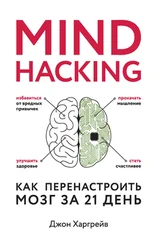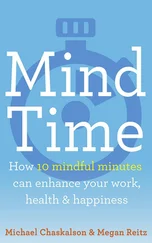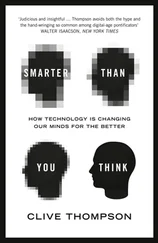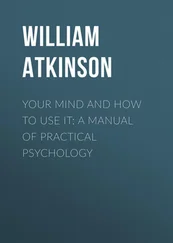But Rome wasn’t built in a day, and neither was the Web. Berners-Lee took a job at a computer company, honed his networking skills, then returned to CERN in the 1980s. By the end of the decade he was ready to act again. This time, all the pieces were in place.
CERN was now the largest node on the Internet, and the sheer volume of information at CERN was staggering. Some easy way of cataloging all that information was desperately needed. A number of technologies had been invented to facilitate the sharing of this information, but what Berners-Lee did was to put them together. “I just had to take the hypertext idea and connect it to the Transmission Control Protocol and domain name system ideas and—ta-da!—the World Wide Web.” 4
Although he makes it sound like an act of magic, nothing could be further from the truth. It was actually a series of carefully planned actions, of goals and subgoals, of problems and solutions, before the inventor of the World Wide Web was able to invent the World Wide Web.
First, he had to convince his boss to let him work on it, so in 1989 he wrote a proposal. With the dead-sexy name of “Information Management: A Proposal,” the proposal was accompanied by a diagram that looked like a schizophrenic Christmas present: a collection of boxes, clouds, and lines interconnected in a flowchart from hell. It’s no wonder that the proposal was rejected—although, in Berners-Lee’s defense, how would you possibly illustrate the Web to someone who’s never seen it before?
Undeterred, he acted again. With the help of a colleague, he revised the proposal (presumably adding more boxes and lines), and presented it again in 1990. This time he got the go-ahead. If the story of the Web was a video game, this was unlocking a major achievement, allowing Berners-Lee to level-up. Now the real work began.
When Edison perfected an incandescent lightbulb for the masses, he also had to invent hundreds of other parts to make the system work, from light switches to power meters to electrical wiring. He had to develop a method of running electrical wire into the home at a reasonable price. Then he had to create machines to generate electrical power, power plants to house the machines, and companies to run the power plants. The lightbulb was a tiny piece: Edison’s real genius was developing the system (lighting), the meta-system (electric power), then the meta-meta-system (the electric power industry).
Similarly, Berners-Lee had to create the first web browser, the first web editor, and the first web server. The genius of Berners-Lee was that he was able to accomplish all these steps without being overwhelmed by the scale of the project. The magnitude of what he built is really astonishing—that he could see all these nonexistent pieces in his mind, and build them all, one by one.
Sir Tim, as he is now known, said that his key insight was going meta on the problem: “It was a step of generalising, going to a higher level of abstraction, thinking about all the documentation systems out there as being possibly part of a larger imaginary documentation system.” 5
I adore this story, because it brings together so many pieces of the mind hacking program: from thinking at a higher level, to visualizing what he wanted to achieve, iterating, collaborating, and finally acting. An idea as big as the Web, in the sphere of a lesser mind, would not have gone anywhere. But Sir Tim was able to take that idea and act.
If you’ve ever been tripped up by procrastination, indecision, or just plain laziness on the way to your dreams, our final chapter will teach you skills to act. Based on the latest research, here’s how to take your big ideas out of your mind and into the world.
The Power of Tiny Goals
David Blaine is the Harry Houdini of our time, an endurance artist who has performed record-breaking feats such as being encased in a block of ice for several days, buried underneath a 3-ton tank of water for a week, and sealed inside a Plexiglas case dangling over the river Thames for a month and a half. If you’re looking for someone who is able to accomplish difficult long-term goals, David Blaine is your man.
To perform these feats of endurance, Blaine must be in top physical and mental condition. He eats well, reads regularly, does charity work, avoids alcohol, and is perfectly efficient with his time. Leading up to a stunt, Blaine is the model of discipline and self-control. Reportedly, he goes without food for up to a week before his stunts, to avoid soiling himself while submerged in a tank.
But in between his shows, David Blaine gets fat.
In Roy F. Baumeister and John Tierney’s Willpower: Rediscovering the Greatest Human Strength , Blaine admits that when he’s not on the clock, he kind of lets himself go. “After a stunt I’ll go from 180 pounds to 230 pounds in three months,” he confesses. “I waste a lot of time. I’ll drink. I’ll do silly things.” Then, when it’s time to get back in training mode, “I’ll drop about three pounds a week . . . so in five months, I’m completely transformed and my discipline levels are really high.” 6
The technique that Blaine uses to get back into shape is one that any of us can use: acting on tiny goals. When he goes back in training, he says, “I make tons of weird goals for myself. Like, when I’m jogging in the park in the bike lane, whenever I go over a drawing of a biker, I have to step on it. And not just step on it—I have to hit the head of the biker perfectly with my foot, so that it fits right under my sneaker.”
He then explains the magic formula: “ Getting your brain wired into little goals and achieving them, that helps you achieve the bigger things you shouldn’t be able to do .”
Think back to Dr. Richard Peabody, who had recovering alcoholics sit down at the end of each day and write down the next day’s schedule. The power of that practice was that the alcoholic could make a list of tiny goals that could all be accomplished within twenty-four hours. Achieving those small goals creates a kind of rhythm, a positive momentum that slowly turns the alcoholic’s negative spiral into a positive one.
One of the reasons so many of us fail at our goals is that we try to take it all on at once. Every year at my health club, there is a huge influx of new members on January 1. Every workout machine is filled with sweaty people gasping for air, trying to fulfill their New Year’s resolutions. You can tell these folks are making the all-or-nothing kind of resolutions, such as “I will work out every day this year.” Because every year, sometime around mid-January, they vanish.
In mind hacking, you’ve imagined some big, hairy, audacious goals for yourself. In order to accomplish those goals, you’re going to have to do the work . You have to act. And you will be much more likely to succeed if you break down your primary goal into a series of tiny goals—as small as you need!
You don’t get in shape by going to the gym every single day, starting January 1; you get in shape by going to the gym today . You don’t stop smoking by vowing to never pick up a cigarette again; you stop for today . You don’t earn a billion dollars overnight; you work hard at earning money today .
Sometimes, even the one-day-at-a-time approach is too much and you need to break it down smaller still. If you can’t make it to the gym regularly, try going for a walk at lunchtime. If you can’t stay on a diet, try challenging yourself to drink a large glass of water. If you’re trying to complete a huge project and you’re so overwhelmed that you procrastinate working on it, try working on it for fifteen minutes.
Don’t get around to it,
Читать дальше
![Джон Харгрейв Mind Hacking [How to Change Your Mind for Good in 21 Days] обложка книги](/books/404192/dzhon-hargrejv-mind-hacking-how-to-change-your-min-cover.webp)











